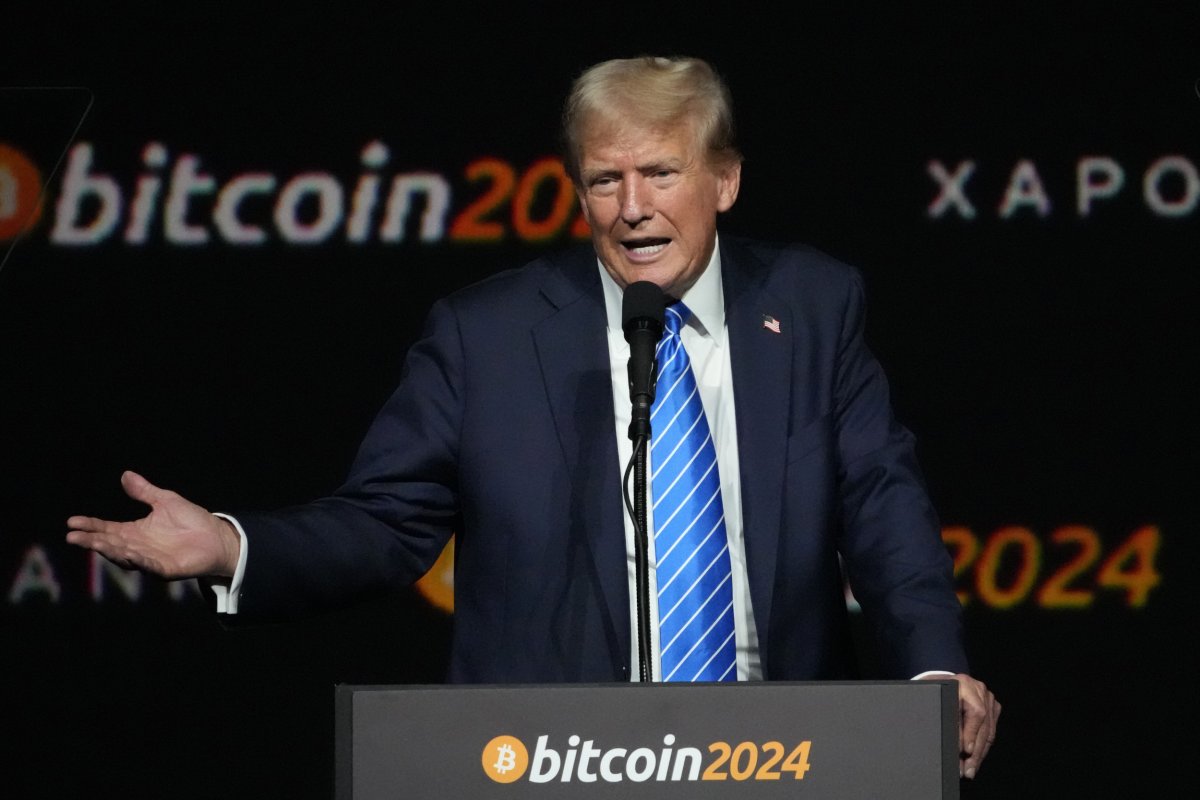Bitcoin reached a milestone on Wall Street on Thursday, surging past the $100,000 mark for the first time and pushing global markets upward.
Wall Street’s record rally followed another robust performance in U.S. stocks, with investors remaining optimistic despite ongoing political and economic challenges.
In Europe, France’s CAC 40 rose 0.6 percent in early trading, reaching 7,346.64, as the country grappled with political tensions.
A no-confidence motion, driven by budgetary disputes, forced Prime Minister Michel Barnier and his Cabinet to resign after an unprecedented alliance between both right and left of center lawmakers.

Eugene Hoshiko/AP
Meanwhile, Germany’s DAX edged up 0.4 percent to 20,303.05, and the FTSE 100 in London added 0.1 percent, climbing to 8,346.63.
Futures for the S & P 500 indicated a modest gain of less than 0.1 percent, while those for the Dow Jones Industrial Average remained unchanged, reflecting a cautious outlook ahead of Friday’s highly anticipated U.S. jobs report.
What Factors Have Cause Bitcoin to Hit Record Highs?
The standout story in global markets was Bitcoin’s impressive ascent, crossing the $100,000 threshold late Wednesday after former President Donald Trump selected Paul Atkins, a vocal cryptocurrency advocate, to head the Securities and Exchange Commission.
Bitcoin has enjoyed a meteoric rise since Election Day, when it was priced at $69,374.
By Thursday morning, it was trading at $102,886, according to CoinDesk.

Mark Humphrey/AP, file
How Has Asia’s Political Uncertainty Impacted Its Markets?
In Asia, South Korea’s Kospi fell 0.9 percent to 2,441.85, continuing a 1.4 percent drop from the previous day, as political instability roiled the region.
South Korean President Yoon Suk Yeol found himself embroiled in controversy following a sudden martial law declaration on Tuesday night.
Though he revoked the decree hours later, opposition parties swiftly moved to impeach him and his defense minister over the handling of the crisis.
Yoon accepted the resignation of his defense minister on Thursday, further escalating tensions.
Elsewhere in Asia, Japan’s Nikkei 225 gained 0.3 percent to close at 39,395.60, while Australia’s S&P/ASX 200 rose 0.2 percent to 8,474.90.
However, Hong Kong’s Hang Seng Index dipped 0.9 percent to 19,560.44, and the Shanghai Composite managed only a modest 0.1 percent gain, reaching 3,368.86.
Will There Be Further Cuts in US Interest Rates?
Wall Street’s attention now shifts to Friday’s U.S. jobs report, which will provide crucial insights into the health of the labor market.
Economists are bracing for a report that may show a slowdown in hiring as the economy adjusts to higher interest rates.
The Federal Reserve, which has been cutting interest rates since September in an effort to support economic growth, is widely expected to implement further reductions in the coming months.
However, with Donald Trump’s presidency shaking up economic expectations, particularly with his protectionist stance on tariffs, analysts are now questioning whether the Fed’s policy path will change in light of potential inflationary pressures.
In commodities, oil prices showed modest gains, with benchmark U.S. crude rising by 15 cents to $68.69 per barrel and Brent crude adding 13 cents to $72.44 per barrel.
In currency markets, the U.S. dollar weakened slightly against the Japanese yen, falling to 150.23 from 150.62 yen.
The euro ticked up to $1.0529, from $1.0510 the previous day, as traders kept a close watch on developments surrounding global economic and political risks.
This article contains additional reporting from The Associated Press
